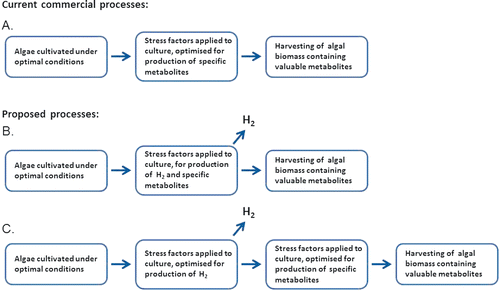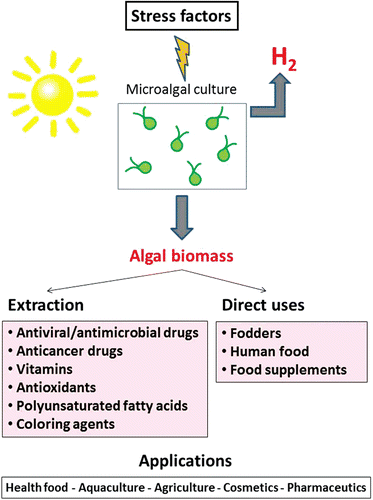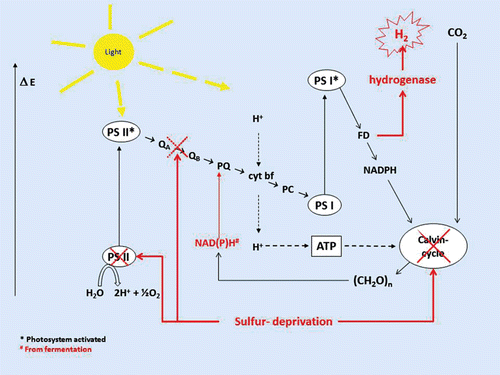Figures & data
Table 1. Algal species which have been studied and shown ability to produce hydrogen and/or metabolites with pharmaceutical/ industrial interest and algae which are being used today for commercial purposes.
Table 2. Companies producing green microalgae for health food/ aquaculture/ animal feed/ pharmaceutical and industrial purposes.




